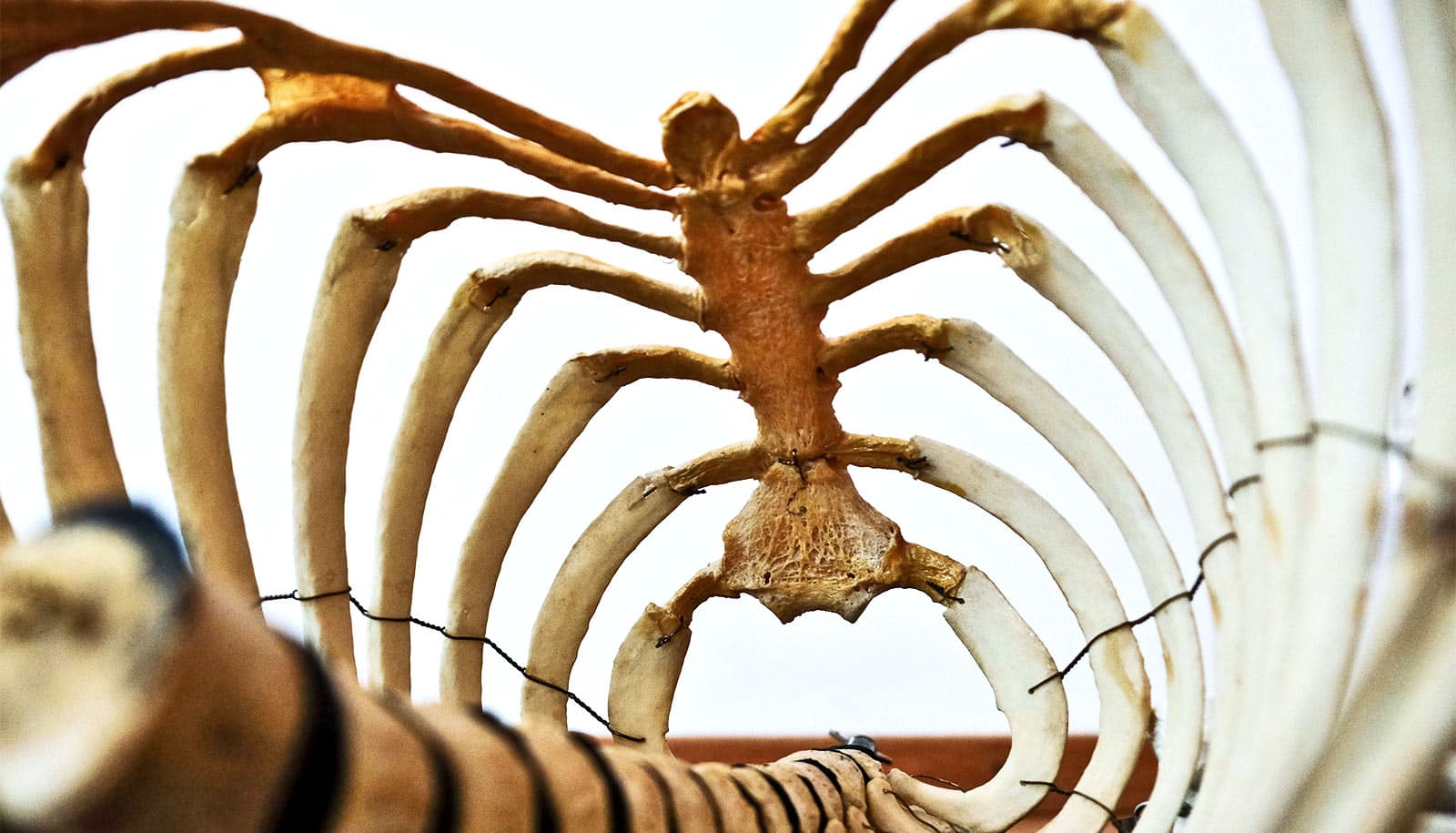A new therapeutic treatment uses engineered stem cells to target and kill cancer bone metastases while preserving the bone, a study with mice shows.
The approach equips engineered mesenchymal stem cells with targeting agents that drive them to bone metastatic sites, where they offload therapeutics.
“What’s powerful about this strategy is that we deliver a combination of both anti-tumor and anti-bone resorption agents so we can effectively block the vicious circle between cancers and their bone niche,” says Weian Zhao, associate professor of pharmaceutical sciences and biomedical engineering at the University of California, Irvine and lead author of the paper in EBioMedicine.
“This new targeted approach could improve quality of life both during and after treatment.”
“This is a safe and almost nontoxic treatment compared to chemotherapy, which often leaves patients with lifelong issues.”
Sandra Spivey, an Orange County patient advocate who has been living with metastatic breast cancer since 1997, has experienced firsthand the ravages of traditional treatment.
“Chemotherapy can kill both cancer cells and normal cells and create drastic side effects,” she says. “I have lost my hair; I have lost sensation in my hands and feet. Most of all, chemotherapy really robs you of your time. This new targeted approach could improve quality of life both during and after treatment.”
Scientists could also use the strategy with other bone diseases that are usually difficult to manage, such as multiple myeloma and osteoporosis.
“This study will pave the way to a clinical trial in the short term, as this type of stem cell has already been tested and deemed safe in the clinic,” Zhao says. “We will look to target patients with bone metastases.”
Additional coauthors are from UC Irvine and UC San Diego. The National Cancer Institute, the National Institutes of Health, the National Science Foundation, the California Institute for Regenerative Medicine, Baylx Inc. and France’s ARC Foundation for Cancer Research supported the work.
Source: UC Irvine


